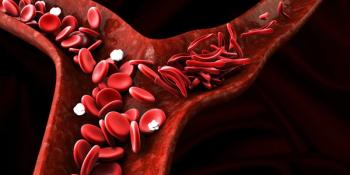
Allergy to Metal Orthopedic Implant Linked to Unusual Skin Cancer
Chronic inflammation may lead to development of aggressive form of cancer.
Chronic inflammation may lead to development of aggressive form of cancer.
Patients who develop persistent skin rashes after metal devices are implanted may face an increased risk of an unusual type of skin cancer, according to a recent study.
Published online October 8, 2014 in the Journal of Clinical Investigation, the possibility of a connection between implants and cancer was raised after a patient who had a metal rod implanted after suffering a fractured ankle developed a skin rash near the location of the implant. The patient was later determined to be allergic to the nickel in the implant, which was subsequently removed.
The rash persisted for a few years before a rare form of skin cancer, known as Marjolin’s ulcer, developed at the site of the implant. The cancer is an invasive and potentially deadly squamous form of cell cancer that is extremely rare in young and otherwise healthy people.
“If you’re allergic to something, the first thing to do is to avoid it, but the patient couldn’t,” said Wayne M. Yokoyama, MD, in a press release. “Some nickel had likely seeped from it into her tissue and was still present in her skin even after the implant was removed. It’s as if a patient allergic to poison ivy kept putting poison ivy on the skin.”
Marjolin’s ulcer is most frequently found in patients with prior history of skin cancer, which raised questions due to the fact this patient was under 50-years of age and never had skin cancer.
In an effort to make orthopedic implants more durable, usage has increased of nickel, cobalt, and chromium alloys, which can cause chronic inflammation that promotes the development of skin cancer in people who are allergic.
The researchers used a mouse model to show that chronic skin inflammation caused by continuous contact with allergens can contribute to the development of tumors, which suggests patients with metal implants near the skin need to be monitored for inflammation, according to the study.
The chronic inflammation caused by metal implants can lead to joint pain and swelling, while contributing to joint failure. When the implants are placed near the skin, however, less than 5% of patients develop an inflammatory rash as a result of the implant.
Researchers found that contact allergy brings inflammatory cells and molecules to the site of the allergic reaction, which can cause inflammatory cells and molecules to become active at the site of the allergen if it remains active for an extended period. This mix of cells and molecules can subsequently promote the development of skin tumors.
“This model supported cancer development so strongly that some mice developed invasive squamous cell skin cancers similar to the patient’s tumor,” said lead author Shadmehr Demehri, MD, PhD.
When the researchers examined the cells and molecules involved in chronic contact allergy in mice, they identified several that already had been linked to tumor development. Some of these cells and molecules also were present in biopsy samples from the patient’s ankle.
The scientists are working to identify which inflammatory cells and molecules are most supportive of cancer formation. The results are also expected to fuel debate and research on whether testing should be done for metal sensitivity in patients who may receive these types of implants.
“Allergen-free versions of some implants are available,” Dr. Demehri said. “These versions may cost more or be less durable, but for some patients with sensitivity to metals, they may be the best option.”
Newsletter
Stay informed on drug updates, treatment guidelines, and pharmacy practice trends—subscribe to Pharmacy Times for weekly clinical insights.






















































































































































































































